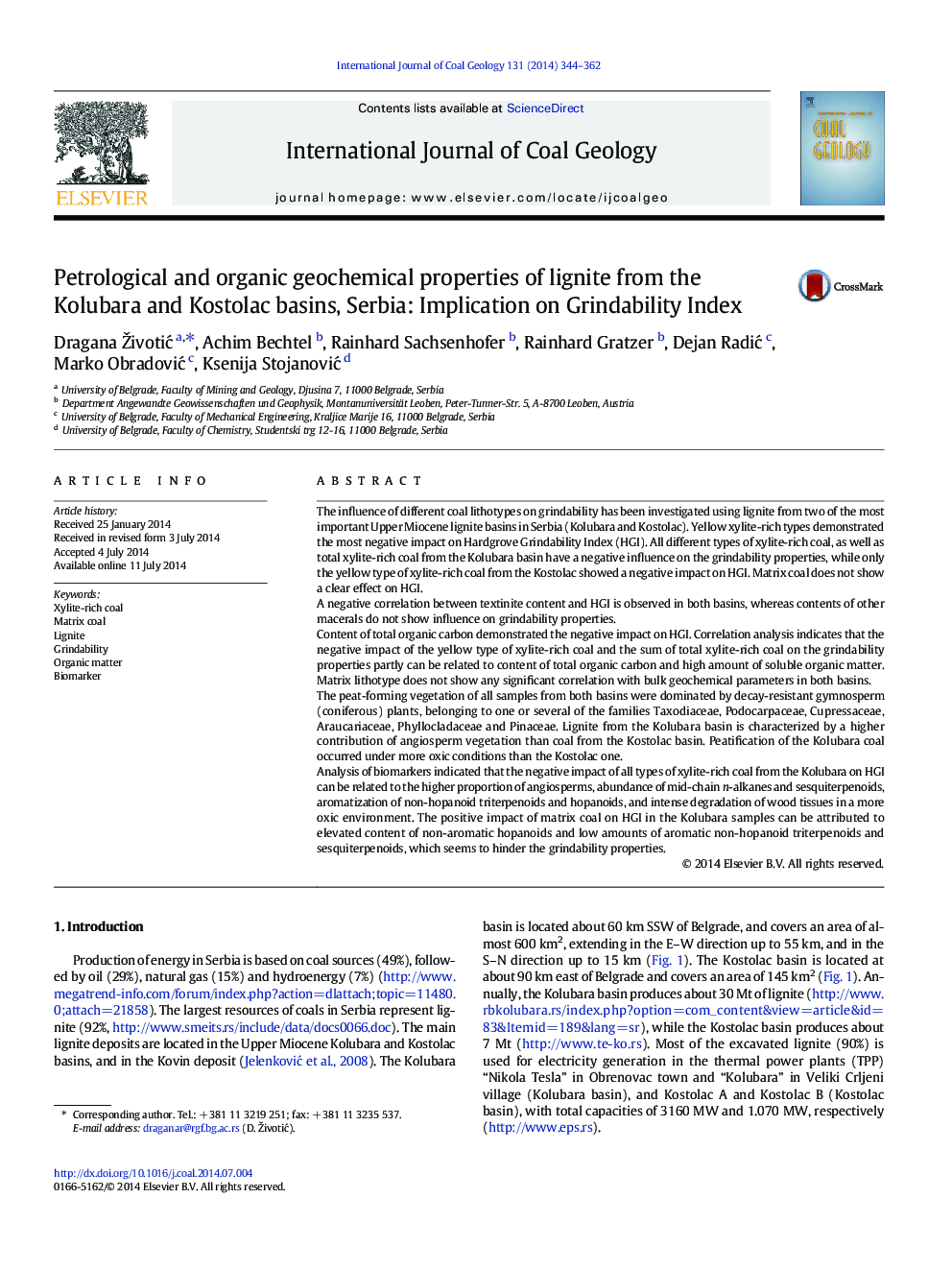| کد مقاله | کد نشریه | سال انتشار | مقاله انگلیسی | نسخه تمام متن |
|---|---|---|---|---|
| 1753044 | 1522566 | 2014 | 19 صفحه PDF | دانلود رایگان |

• Grindability properties of different coal lithotypes have been investigated.
• Yellow type xylite-rich coal show's most negative impact on Hardgrove Grindability Index.
• Textinite hinders grindability in Kolubara and Kostolac lignite.
• Higher proportion of angiosperms caused lowering of grindability properties.
• Mechanical properties of lignite considerably depend on its chemical composition.
The influence of different coal lithotypes on grindability has been investigated using lignite from two of the most important Upper Miocene lignite basins in Serbia (Kolubara and Kostolac). Yellow xylite-rich types demonstrated the most negative impact on Hardgrove Grindability Index (HGI). All different types of xylite-rich coal, as well as total xylite-rich coal from the Kolubara basin have a negative influence on the grindability properties, while only the yellow type of xylite-rich coal from the Kostolac showed a negative impact on HGI. Matrix coal does not show a clear effect on HGI.A negative correlation between textinite content and HGI is observed in both basins, whereas contents of other macerals do not show influence on grindability properties.Content of total organic carbon demonstrated the negative impact on HGI. Correlation analysis indicates that the negative impact of the yellow type of xylite-rich coal and the sum of total xylite-rich coal on the grindability properties partly can be related to content of total organic carbon and high amount of soluble organic matter. Matrix lithotype does not show any significant correlation with bulk geochemical parameters in both basins.The peat-forming vegetation of all samples from both basins were dominated by decay-resistant gymnosperm (coniferous) plants, belonging to one or several of the families Taxodiaceae, Podocarpaceae, Cupressaceae, Araucariaceae, Phyllocladaceae and Pinaceae. Lignite from the Kolubara basin is characterized by a higher contribution of angiosperm vegetation than coal from the Kostolac basin. Peatification of the Kolubara coal occurred under more oxic conditions than the Kostolac one.Analysis of biomarkers indicated that the negative impact of all types of xylite-rich coal from the Kolubara on HGI can be related to the higher proportion of angiosperms, abundance of mid-chain n-alkanes and sesquiterpenoids, aromatization of non-hopanoid triterpenoids and hopanoids, and intense degradation of wood tissues in a more oxic environment. The positive impact of matrix coal on HGI in the Kolubara samples can be attributed to elevated content of non-aromatic hopanoids and low amounts of aromatic non-hopanoid triterpenoids and sesquiterpenoids, which seems to hinder the grindability properties.
Journal: International Journal of Coal Geology - Volume 131, 1 September 2014, Pages 344–362